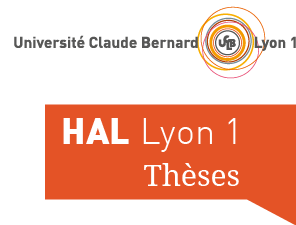Study the chitin and beta-(1,3)-glucan biosynthesis in Botrytis cinerea : applied to new antifungal strategies
Étude de la biosynthèse de la chitine et du β-(1,3)-glucane chez Botrytis cinerea : application à de nouvelles stratégies antifongiques
Résumé
Botrytis cinerea is a necrotrophic ascomycete filamentous fungus responsible of the grey mould disease in more than two hundred species of plants, leading to considerable losses. The emergence of resistant strains forced to search for new targets molecules. The fungal cell wall composed in particular of chitin and β-(1,3)-glucan forming a polysaccharides three-dimensional network, differ from animal and plant cells, is one of the most promising targets. In a first step, an approach combining inhibitors of chitin synthesis and of the β-(1,3)-glucan synthesis had been studied. This would circumvent the compensation mechanisms developed by a fungus in the presence of an inhibitor of one of these two metabolisms. It had been shown that these two inhibitors used in combination induce a synergistic inhibition of fungal growth associated with a novel phenotype called "balloon". Then an inhibitor of β-(1,3)-glucan alone induced hyperbranching of hyphae and an inhibitor of chitin alone induced a swelling of hyphae. In addition, a new method for evaluating the synergistic effect was defined. Subsequently, transcriptomic studies in the presence of inhibitors of the synthesis of chitin and β- (1,3)-glucan, alone or in combination, had been conducted to better understand the effect of these treatments on the fungus. Thus, the regulation of genes involved in the response to wall stress was followed. This study showed a transcriptional compensation to the metabolism of chitin. In none of the treatments a transcriptional compensation to the β-(1,3)-glucan metabolism could be observed. In addition, a study of the signaling pathways involved in cell wall integrity showed an overall response of all pathways but no specific way. In addition, it appeared that the combined treatment induced an overrepresentation in GPI-anchored protein in the transcriptional response. This transcriptomic analysis led to the identification of candidate genes for performing mutagenesis. Mutagenesis of the gene bcFKS1 the catalytic subunit of glucan synthase was achieved by RNAi, given the essential nature of this gene in filamentous fungi. Phenotypic studies confirmed its important role in the pathogenicity of B. cinerea. In addition, a decrease in the rate of radial growth was also observed in these mutants. Finally mutagenesis of two new gene family of type II glycosyltransferases, homologous to the bacterial curdlan synthase involved in the biosynthesis of β- (1,3)-glucan, revealed a marked phenotype of mutants heterokaryotic yet.
Botrytis cinerea est un champignon filamenteux ascomycète nécrotrophe responsable de la pourriture grise chez plus de deux cent espèces végétales, conduisant à des pertes considérables. L’apparition de souches résistantes contraint à rechercher des molécules visant de nouvelles cibles.La paroi fongique composée, en particulier, de chitine et de β-(1,3)-glucane formant un réseau polysaccharidique tridimensionnel, diffère des cellules animales et végétales représente une des cibles les plus prometteuses. Dans un premier temps, une approche combinant des inhibiteurs de la synthèse de la chitine du β-(1,3)-glucane a été étudiée. Celle-ci permettrait de contourner les mécanismes de compensation développés par un champignon en présence d’un inhibiteur d’un de ces deux métabolismes. Il a été montré que ces deux inhibiteurs utilisés en combinaison induisent une synergie d’inhibition de la croissance du champignon associée à un nouveau phénotype dénommé « ballon ». Alors qu’un inhibiteur de β-(1,3)-glucane seul induit un hyperbranchement des hyphes et qu’un inhibiteur de chitine seul, induit un gonflement des hyphes. De plus une nouvelle méthode d’évaluation de l’effet de synergie a été définie. Par la suite, des études transcriptomiques en présence de différents inhibiteurs de la synthèse de la chitine et du β-(1,3)-glucane, seul ou en combinaison, ont été réalisées afin de mieux comprendre l’effet de ces différents traitements sur le champignon. Ainsi, la régulation des gènes impliqués dans la réponse à un stress pariétal a été suivie. Cette étude a montré une compensation transcriptionnelle vers le métabolisme de la chitine. Dans aucun des traitements une compensation transcriptionnelle vers le métabolisme du β-(1,3)-glucane n’a pu être observée. Par ailleurs, une étude des voies de signalisation impliquée dans l’intégrité pariétale montre une réponse globale de toutes les voies mais aucune de manière spécifique. De plus, il semblerait que le traitement combiné induise une surreprésentation en protéine à ancre GPI dans sa réponse transcriptionnelle. Ces analyses transcriptomiques ont permis l’identification de gènes candidats pour réaliser des mutagenèses. La mutagenèse du gène bcFKS1 sous unité catalytique de la glucane synthase a été réalisée par RNAi étant donné le caractère essentiel de ce gène chez les champignons filamenteux.Les études phénotypiques confirment son rôle important dans la pathogénicité de B. cinerea. Par ailleurs, une diminution de la vitesse de la croissance radiale a aussi été observée chez ces mutants. Enfin la mutagenèse de deux nouveaux gènes de la famille des glycosyltransférases de type II, homologues à la curdlane synthase bactérienne impliqué dans la biosynthèse de β-(1,3)-glucane, révèle un phénotype marqués des mutants pourtant hétérocaryotiques.
| Origine | Version validée par le jury (STAR) |
|---|
